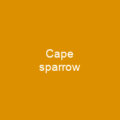The species was first described by Carl Linnaeus in his landmark 1758 10th edition of Systema Naturae as Anas acuta. The scientific name comes from two Latin words: anas, meaning ‘duck’ and acuta, which comes from the verb acuere, ‘to sharpen’ The male’s long central tail feathers give rise to the species’ English and scientific names. Both sexes have blue-grey bills and grey legs and feet.
About Northern pintail in brief

Nevertheless, owing to the huge range and large population of this species, it is not threatened globally. The pintails are sometimes separated in the genus Dafila, an arrangement supported by morphological, molecular and behavioural data. A claimed extinct subspecies from Manra Island, Tristram’s pintail, A. modesta, appears to be indistinguishable from the nominate form. The three syntype specimens of the extinct sub species are held in the collections of National Museums Liverpool at World Museum, with accession numbers T11792, T11795 and T11797. The specimens were collected by J. V. Arundel in Sydney Island, Phoenix Islands in 1885 and came to the Liverpool national collection via Canon Henry Baker Tristam’s collection which was purchased in 1896. The male is 59–76 cm in length and weighs 450–1,360 g, and therefore is larger than the female, which is 51–64 cm long and weighs 454–1135 g. The adult male has a chocolate-brown head and white breast with a white stripe extending the side of the neck. The vent area is yellow, contrasting with the black underside of the vent area, which has the central feathers as much as 10cm long.
You want to know more about Northern pintail?
This page is based on the article Northern pintail published in Wikipedia (as of Dec. 02, 2020) and was automatically summarized using artificial intelligence.







